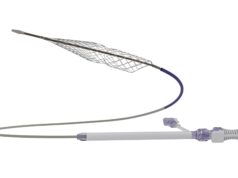
Nearly half of patients deemed preprocedurally to be suffering an acute case of deep vein thrombosis (DVT) turned out to have a “much more” chronic classification of the condition following intraoperative imaging and thrombus inspection post-procedure, an interim analysis from the CLOUT registry demonstrated.
The cohort study was presented at the Eastern Vascular Society (EVS) 2021 annual meeting (23–26 September, Charleston, USA) by Thomas Maldonado, a professor of surgery at New York University Grossman School of Medicine in New York, USA.
The subanalysis used CLOUT data to compare indicators of thrombus chronicity (acute: less than two weeks; subacute: two to six weeks; and chronic: six weeks or greater), examining both their effect on outcomes and removal with the ClotTriever thrombectomy system (Inari Medical)—the primary effectiveness endpoint being equal to or greater than 75% removal of thrombus.
Patients were assessed at three stages: preprocedural (symptom history), intraprocedural (imaging) and post-thrombectomy (visual thrombus inspection).
“When we look at symptoms—based on patient history, complaints in the office—we determined that nearly 38% are acute,” said CLOUT registry principal investigator Maldonado, who disclosed a consulting fee from Inari. “But what happens when you add imaging into this? Half of those are now characterised as subacute or chronic, and then even more so when we look at the visual inspection analysis—we see that there is really a big mismatch between what our clinical suspicion was for acute versus what in fact the thrombus was. This is something that was quite remarkable to me.”
Some 69.1% of limbs were determined to have acute thrombus, 22.2% subacute, and 8.7% chronic based on initial symptom assessment. Following pretreatment imaging, limbs were reclassified as 38.1% acute, 37.7% subacute, and 24.2% chronic, the data showed. Post-thrombectomy, limbs were reclassified further as 30.5% acute, 36.1% subacute and 33.5% chronic.
Complete or near-complete thrombus removal with the ClotTriever, meanwhile, was similar across chronicity classifications: 86.2% in acute, 78.1% in subacute and 81.7% in chronic.
The CLOUT registry is a prospective, multicentre, real-world evaluation of lower-extremity DVT patient outcomes after treatment with the ClotTriever device. Overall interim results for the first 250 patients presented at the New Cardiovascular Horizons annual meeting (1–4 June, New Orleans, USA) showed 100% of blood clots removed in the majority of DVT patients without the need for thrombolytic drugs in short single-session procedures, Inari announced at the time. The registry has a target of enrolling up to 500 patients, with the summary results showing 85% effectiveness for outcome, Maldonado noted in Charleston.
Concluding, Maldonado told EVS meeting attendees: “The CLOUT registry shows excellent safety and effectiveness with a real-world DVT population with acute, subacute and chronic thrombus—and half of all thrombus that we deemed as acute is actually much more chronic than expected when we look at it visually and with imaging. But importantly, regardless of whether acute, subacute or chronic, the device appears to have excellent ability to clear that thrombus—even in the more chronic setting.”









